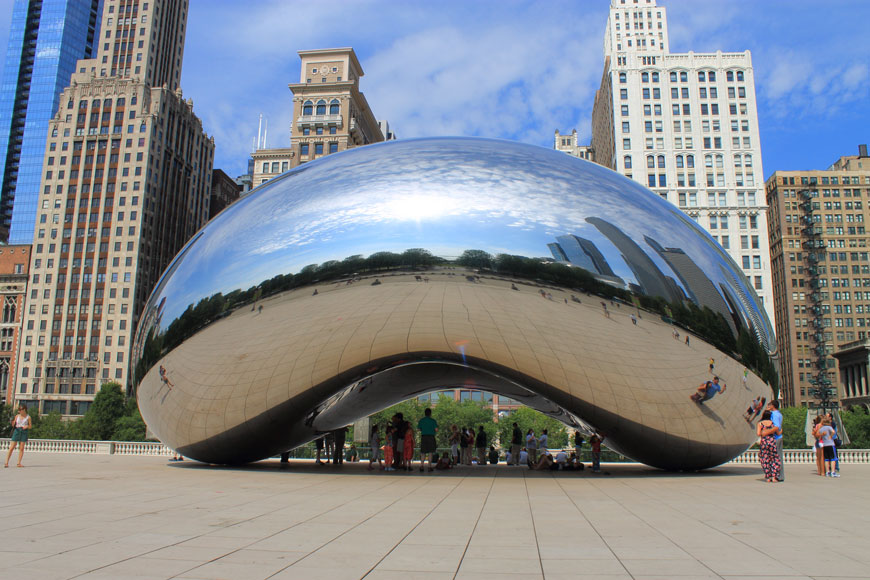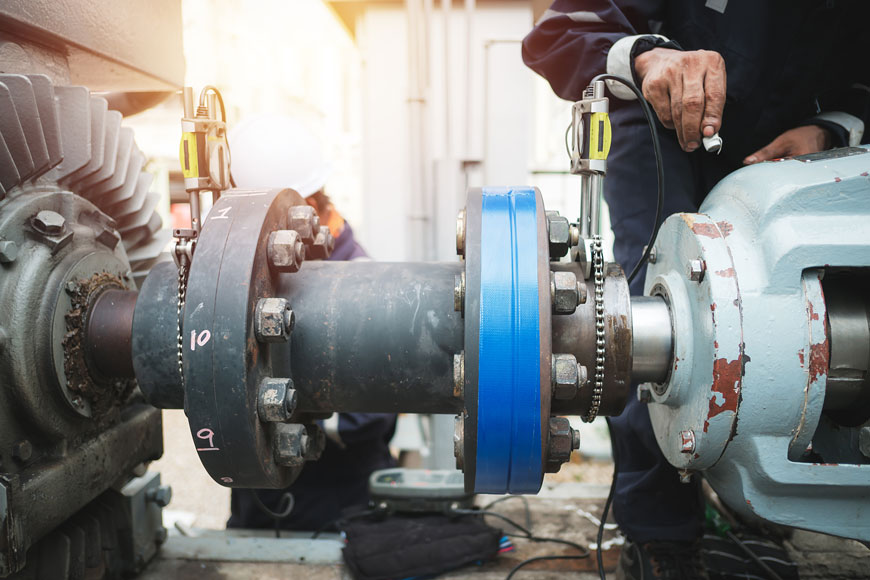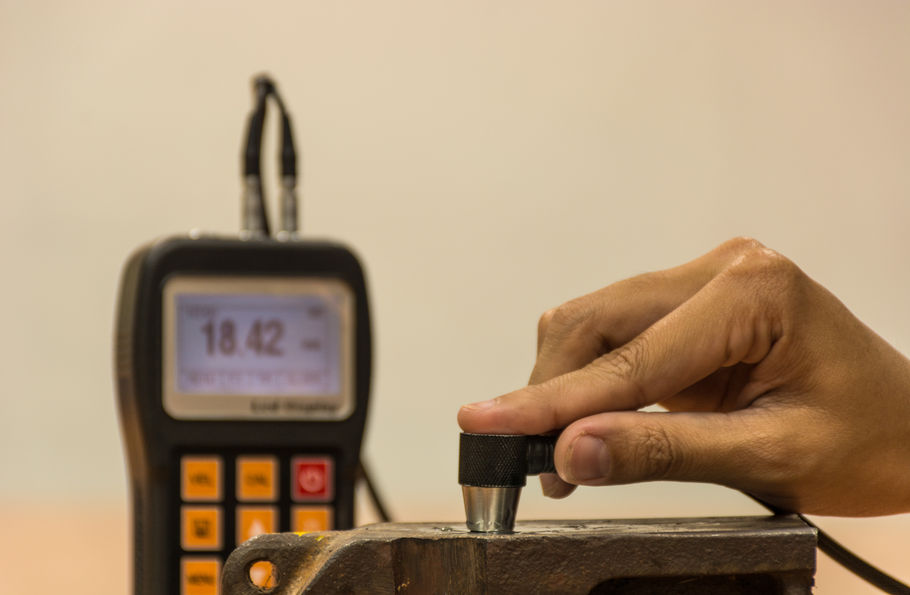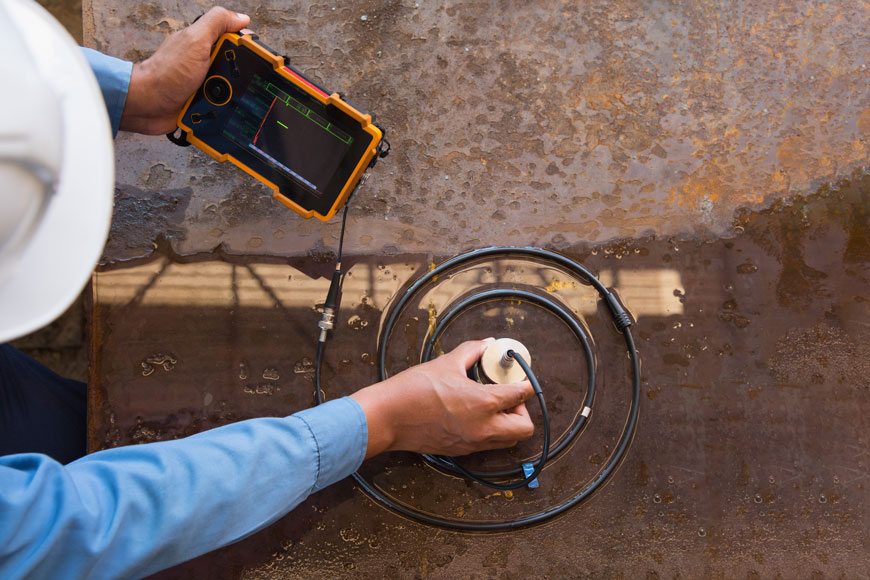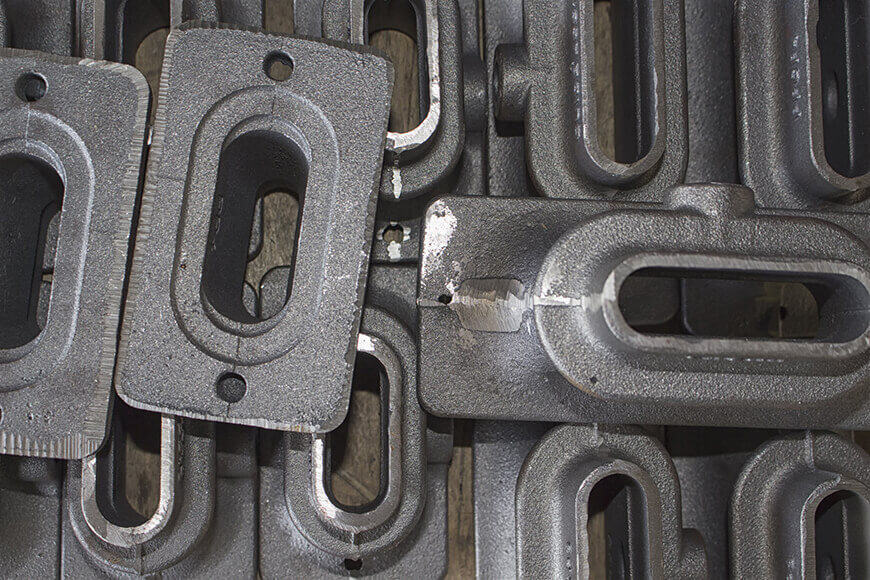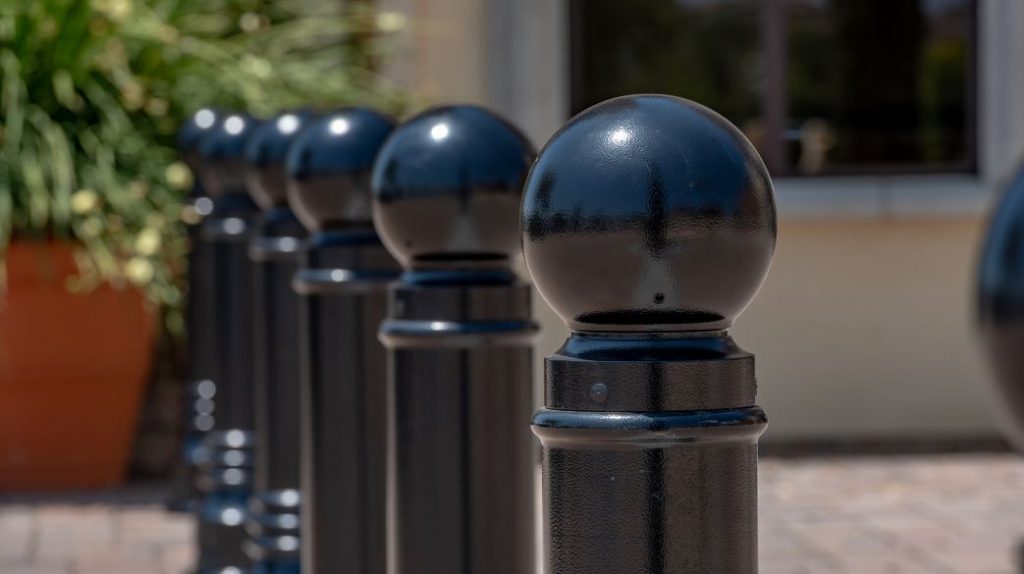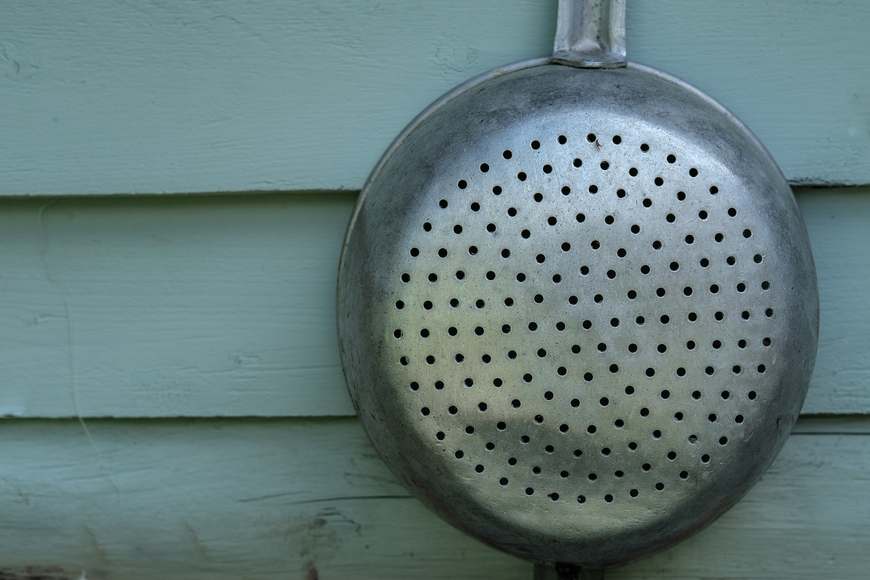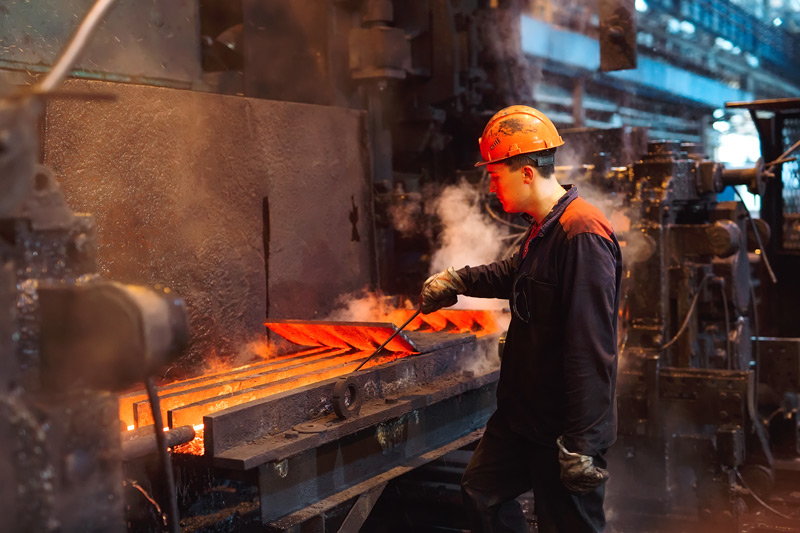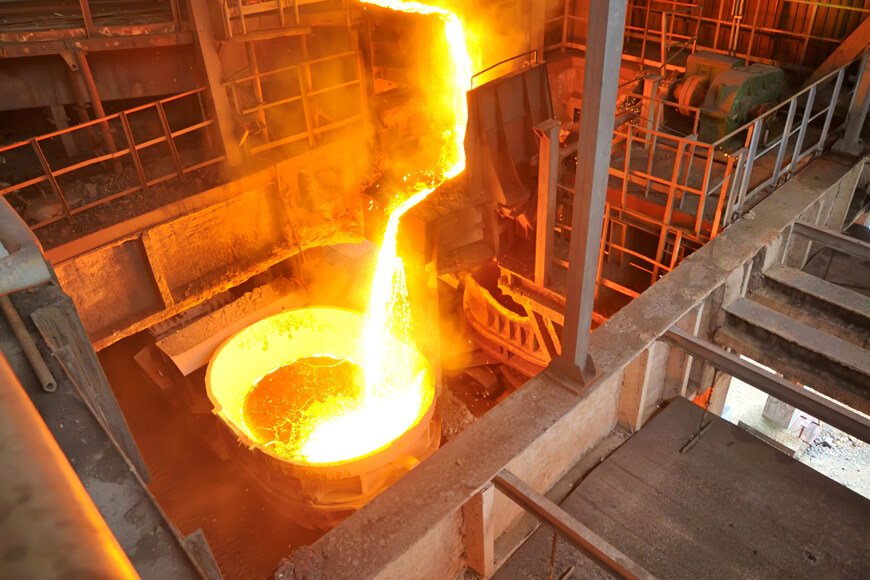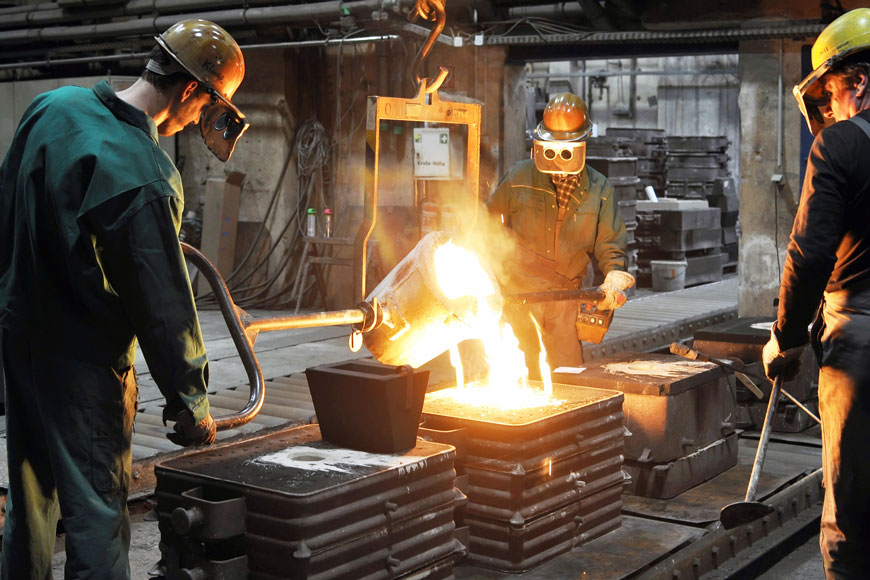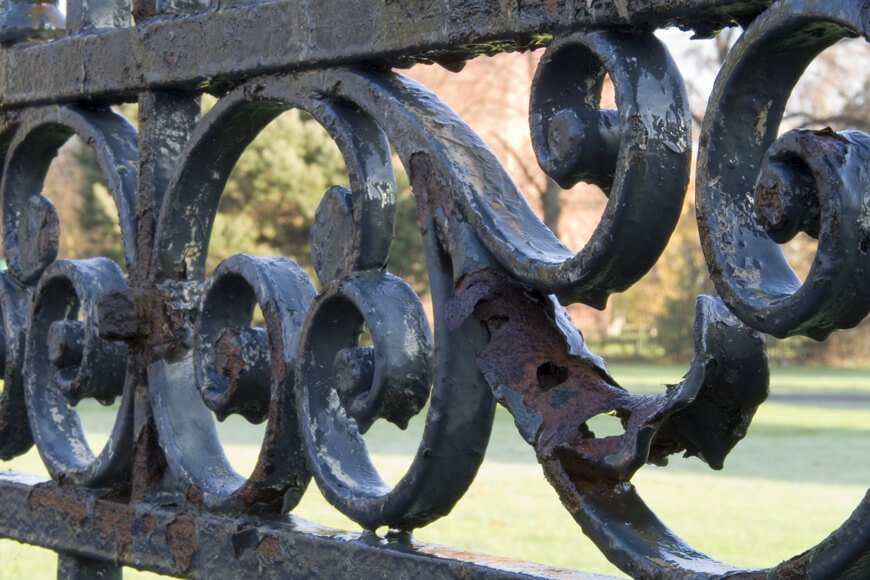Wax or wood patterns for metal casting
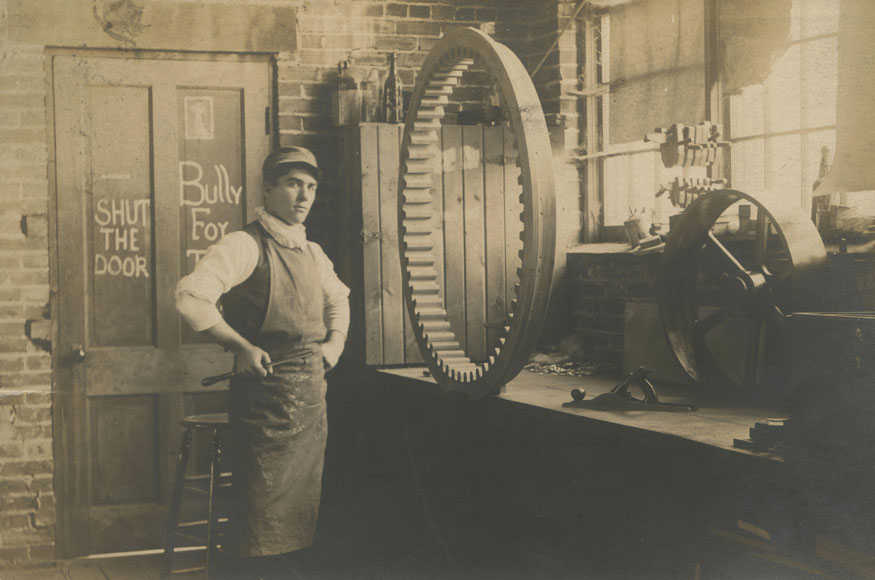
In metal casting, patterns are the objects used to create expendable molds. A single pattern can make up to thousands of molds.
There are different types of patterns, but they fall into two major subtypes: reusable ones for sand or plaster casting, which make impressions into many molds, or expendable patterns for investment casting, that are destroyed before casting during the process of making the mold. For either type of pattern, the patternmaker’s concern is not just replicating the desired object, but also helping direct metal into the mold at the right rate and into the right place. Metal cooling is a process of crystallization, and how the mold fills can influence the direction of freezing, which can be important for strength of the final object.
Every casting pattern needs support
The system of channels to feed metal to all parts of the casting is support infrastructure that, when well designed, will decrease casting defects. These elements include:
- The pouring cup is a tapered entry into the mold. It helps control the flow of metal, as well as capturing slag during pouring.
- The sprue, sometimes called the “down-sprue,” is the main channel into the mold from the pouring cup. It is the river of metal that fills the casting.
- Runners are channels that allow liquid metal to flow from one area of the mold to another.
- Gates or “in-gates” are the entry spaces to the casting itself. Large gates are necessary for quick cooling metals, and smaller gates are used for slowly cooling ones.
- Risers are large-volume reservoirs of liquid metal that are part of the mold but will not be part of the casting. They can be “blind risers,” which are completely buried in the mold to feed tricky areas of the casting, or open risers that fill with metal—and can help indicate to the foundry worker that the mold is full. Risers have a greater volume of metal than any part of the casting so that they will stay hot the longest. Using gravity, risers continuously feed liquid metal into the cooling casting to help prevent holes or shrinkage.
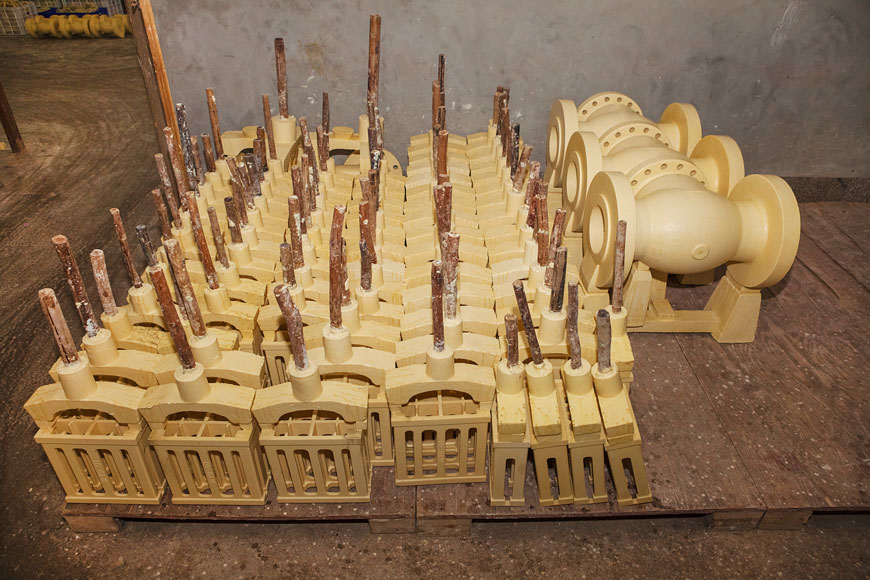
Investment casting patterns
Investment casting patterns often come in a single piece that resemble the final metal product closely—although runners might be built in for removal after casting.
These patterns are twice-molded. A replica pattern is used to create a mold out of rubber, metal, or resin. From this mold, a pattern is cast from a material that can melt or evaporate—typically wax. These cast patterns are coated with a resin or ceramic aggregate, made of sand and a binder, which hardens into a shell.
After the shell mold has completely cured, the cast pattern is removed by melting or evaporation. The now empty mold can be filled with liquid metal. It will be broken away once the casting cools.
Sand casting patterns
There are a few variations for sand casting patterns, but what they have in common is that they are all made of a hard material that can be used to create hundreds of molds when pressed into foundry sand. Wood is the basis of most sand casting patterns, usually from a hardwood that can withstand the heat and humidity of the foundry. These can be used for hundreds of castings, but do eventually begin to deform or split. However, they’re relatively inexpensive to make, and can make very large castings.
If a wooden pattern by itself will deform too quickly, it can be used instead to make a mold for a stronger pattern that will be less likely to warp over time. Fiber reinforced resins or cast metal patterns can be made from the original wood pattern. Metal patterns can also be made through machining. These processes are more expensive, and casting size can be constrained, so they are only used in some situations.
Whether wood, resin, or metal, sand casting patterns will not melt away after creating the mold. Patternmakers need to know how to extract them without injuring the hollow shape they’ve created.
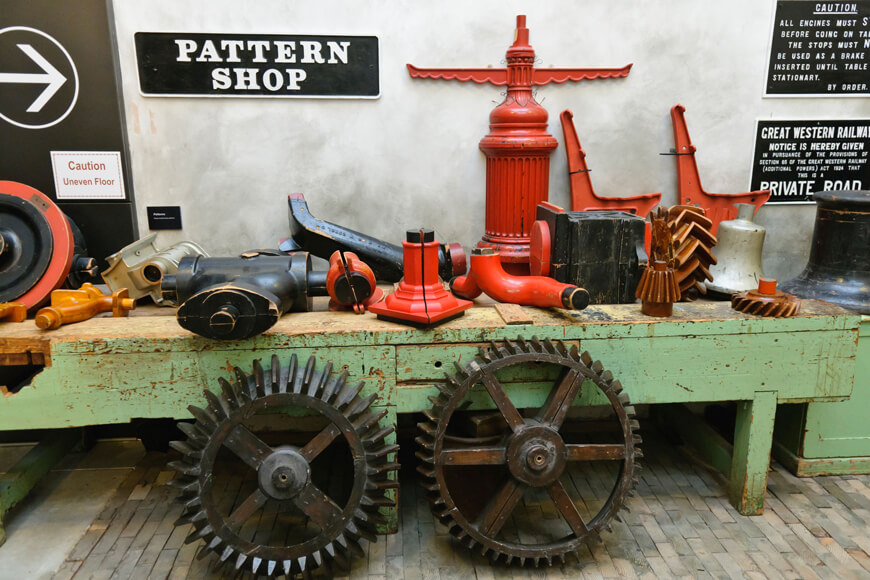
Flat back patterns can be pressed into the drag or bottom part of a sand mold. Often, an un-molded cope or top half of the mold is clamped onto the drag, providing the “flat-back” of the casting to help with pouring and cooling; it will contain the sprue to channel the metal.
Patterns that do not have a flat back are often “split”. This allows each part of the pattern to be impressed into the top and bottom parts of the sand mold and then removed intact without hurting the mold. The different parts of the mold are brought together and clamped tightly to create the hollow shape that will make the casting.
Loose patterns look most like the object they will create, even when split: they capture the details of the object they’re casting but they do not contain the metal-feeding system for the mold. When this is the case, the molder will cut risers, gates, and sprues into the sand by hand. If the pattern includes these channels, it is called a gated pattern.
The parts of the pattern can also be joined to either side of a plate, to make it easy to press both sides of the mold at the same time. This is called a match plate pattern, and it is very helpful for factories with a high rate of production. Sometimes, automated factories mount each part of the pattern onto their own plate, so that there are individual cope pattern and drag pattern plates.
Sand casting patterns can also be used to carve the sand, rather than impressing a shape into it. A sweep pattern spins a blade with a shaped profile around an axis, hollowing out a mold. It is helpful to think of sweep patterns like a lathe that shapes negative space: the cast objects they make will have symmetry around a central axis.
The careful craft of allowances
Patterns are not the same as initial models of a design. They are a production prototype that reflects the dynamics of metal manufacturing.
Cabinetmakers and joiners are often those who end up working in a foundry making wood patterns. Though they are primarily woodworkers, they need to understand the behavior of metals. A good patternmaker knows how to adjust their pattern to compensate for how metal cools and what sort of finishing steps might be needed on the part.
Shrinkage Allowance is a correction to compensate for the solidification shrinkage of the metal and its contraction during cooling. These allowances vary with the type of metal and size of casting. Typical allowances for cast iron are 1/10 to 5/32 in/ft; for steel, 1/8 to 1.4 in/ft; and for aluminum, 1/16 to 5/32 in/ft. These allowances also include a size tolerance for the process so that the casting is dimensionally correct.
Wax pattern makers must additionally be aware that the wax molding process also requires a shrinkage allowance. Pattern, sprue, and machine waxes all have different shrinkage rates at standard pouring temperatures. Therefore, the wax pattern maker must create a mold that adjusts for both wax and metal shrinkage, where the wood pattern maker for sand casting need only worry about the metal.
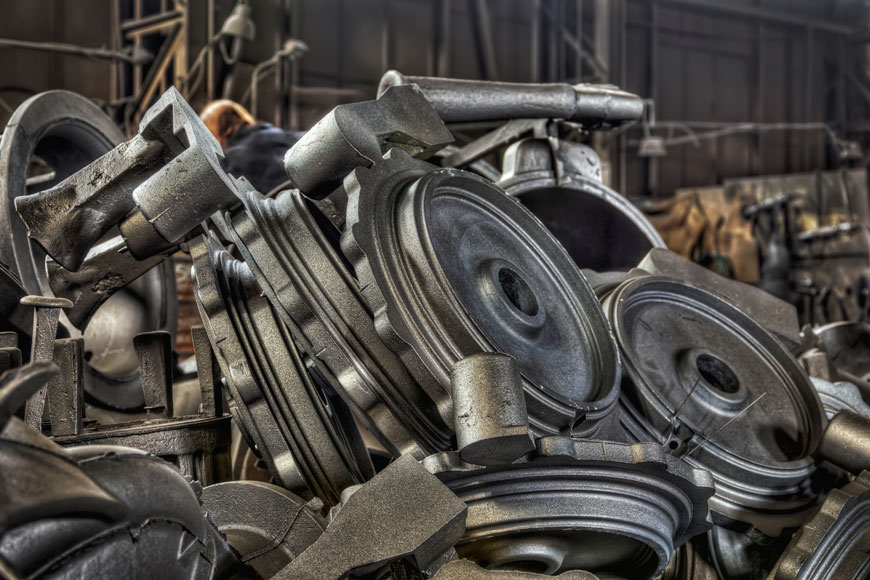
Machine finish allowance (“machining allowance”) is necessary if the cast object is going to be refined after it’s shaken out. The allowance must provide enough material that machining won’t make the object too small. Sometimes, knowing there will be machine finishing helps a wood pattern designer decide where to place the risers: the stock metal can be clamped while the casting is being machined.
Distortion allowance is an artful adjustment that is made to a pattern when the metal used will distort as it cools. If the displacement angles are known, the pattern can be made to compensate. This modification is called a “camber” and can make the original pattern look warped.
Draft allowance is a modification needed only for sand casting patterns, not investment patterns. Pattern makers need to make sure that their patterns can be removed from the sand without destroying the shape they’ve left behind. This is done by tapering the walls of the mold, just as the buckets for sandcastles are usually tapered. Sharp corners and straight edges are more likely to crumble when the pattern is removed from the molding substance.
Painting the wooden pattern
Wooden patterns are often painted. Temporary patterns may only get one coat, but permanent patterns generally get three layers of paint. A shellac or lacquer helps the pattern slide from the mold, which is why it is helpful even with a pattern meant to be used only once. Modern paints with graphite make this process even smoother.
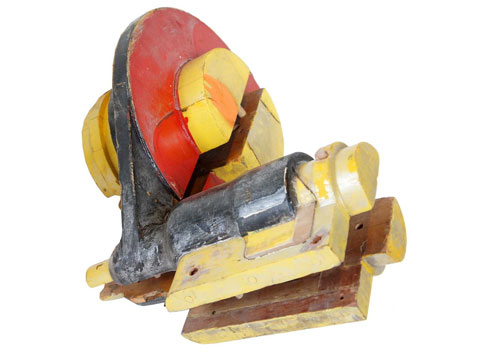
Paint also helps protect the pattern from heat and humidity, especially when it is meant to be stored. The paint on a pattern must be drip and crack free: any bumps in the surface of the pattern will be captured in the casting. A paint drip in the wrong place could cause crumbling in the mold.
Traditionally, the paint on casting patterns was color coded, with colors denoting the finishing steps that would be needed for the casting. Although the standards no longer universally applicable, there are still foundries that use this basic color system.
Red—Indicates no machining needed on this surface of the final casting.
Yellow—Indicates this surface to be machined on final casting.
Black—Indicates the surface needs a core, and where the core’s position might lie.
Clear varnish or unpainted—Indicates parting line or join on the casting.
Storing and reusing patterns
A pattern can have a long life in a foundry, used to make hundreds or thousands of castings. Often, these patterns are stored between production runs, and the necessity and organization needed for keeping a “library” of patterns is one of a foundry’s concerns. The patterns must be stored in a dry place with good airflow, but the expense of storing and insurance means that if the production runs are small and infrequent, it may be easier to destroy the patterns and remake them—or to send them to the original designer. A pattern that’s been stored outside of the foundry may not have been taken care of properly and so might never make a solid casting again. Historically, destroying patterns was a risky process, since the pattern might be the most faithful capture of a design.
The issue of pattern storage has therefore been a balance of concerns. Size and frequency of production runs must be weighed against the consistency of a part over time. The rise of rapid prototyping and computer design has changed this dynamic. Patterns are designed and stored digitally, and prototypes can be 3D-printed, so there is less risk to destroying them. Therefore, a foundry and their client will decide after determining which is more economical: storing the pattern long term or recreating it when needed.
An unheralded art
Pattern makers are technicians and artisans who take prototypes and carefully adjust them to the requirements of production and the properties of metal. With specialized experience, they are able to suggest tweaks to make the design more efficient. The use of CAD programs and predictive algorithms are helpful to the modern patternmaker in determining possible defects in metal casting, which helps lower defect rates, but patternmakers still bring a human eye and steady hand to the process.
Whether a project is sand or investment cast, it started its life as a pattern.


